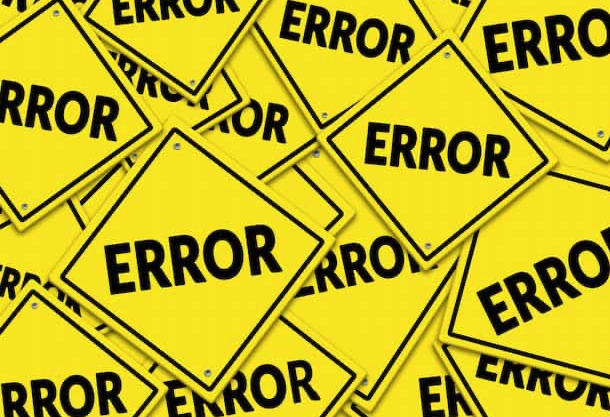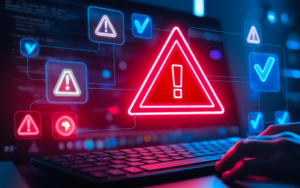Most people perceive technology as a precise, logic-based system that relies on algorithms, programming, and mechanical procedures. But, in every code line, every server setup, and every network configuration, there is a human being who is making choices. Erroneous decisions can lead to significant malfunctions. Human error is among the major causes of technological failures in all sectors, frequently masked by the discussion of hardware issues as well as software issues. If it’s a misspelled command, a faulty update, or an incorrect setting, human error can cause problems for even the most sophisticated systems.
The Complexity of Modern Systems
Technology continues to develop and develop; today’s systems are becoming increasingly complicated and interconnected. This requires attentive management, constant monitoring, and a profound understanding. Even minor errors in these systems could result in large-scale outages or even failures. One mistake on a firewall for network use, a misplaced deployment command, or a missed step in a security update could cause a cascade of issues. Human error or misinterpretation, not malfunctioning machines, causes these issues. In high-risk environments, complex systems increase the likelihood that human error can result in an incident of a significant nature.
Failures in Software Development
Software development is one of the areas where human error could be a major source of concern. Coding errors, also known as bugs, are a normal component of the process of development. However, failure to discover these mistakes during code review or testing can lead to issues during application deployment. A tiny logic flaw in the code can cause a financial application to calculate incorrect balances or an application for health to report incorrect information. Sometimes, developers commit errors because of insufficient requirements, fatigue, or pressure to finish. These seemingly minor issues could affect the integrity of whole systems.
Mistakes During System Updates
Updates to hardware and software are a regular aspect of governing technology. These updates typically contain new features, security patches, and performance enhancements. However, human error in the process of updating is a common reason for technical errors. Administrators of systems may apply updates to the wrong location, fail to follow crucial steps during the process of updating, or fail to test the modifications in a proper manner. The results could range from temporary disruption to permanent loss of data. The update’s management caused the failures, not the update itself.
Misconfigured Systems and Networks
Configuration errors are another frequent reason for tech-related disasters. Often, systems fail not because of flawed or faulty technology, but due to improper configuration. For instance, a poorly configured server could be accessible on the internet, even though it is supposed to be private, and expose sensitive data to attackers. Similarly, human error can leave a cloud storage space unsecured, potentially leading to a significant data breach. The most common causes of these errors are an inability to comprehend, rushed work, or the lack of security procedures.
Insufficient Training and Knowledge Gaps
In many tech-related accidents, the root of the problem isn’t malice or negligence; however, it is the lack of knowledge or expertise. People who aren’t well-versed in the tools they employ have a higher chance of making errors. If employees operate outside their comfort zone with no proper direction, the chance of making a mistake increases significantly. It can be challenging to keep staff current in fast-moving environments where the latest technologies are constantly evolving. Failure to provide the right education and support can lead to an increase in human errors and, in turn, technology errors.
Communication Breakdowns in Teams
Inadequate communication between teams causes the majority of tech failures. Uncertainties, insufficient documentation, or clear instructions could all result in mistakes in implementation or omissions. For example, a developer might believe that a feature functions in a particular way, while the tester may have an entirely different view, which can lead to various differences. In larger companies, siloed departments may result in important information being overlooked. A small miscommunication between development and operations could cause a problem that affects a large number of users. Effective communication is vital for preventing these issues.
Time Pressure and Overwork
Human error tends to be more frequent when under pressure. Individuals in the technology sector often work long hours and experience immense stress due to strict deadlines and heavy workloads. People who are exhausted tend to forget the details, overlook essential steps, or make erroneous assumptions. A lot of major tech-related failures can be traced to situations in which someone is trying to meet a deadline or manages multiple tasks with no support. The effects of fatigue and burnout are a major factor in making decisions. When the stakes are high, even a small error can cause a giant impact.
Conclusion
Human error is a normal element of working with technology, but its impact can be minimized through awareness, education, and the design of the system. Many of the major technical errors could have been avoided by paying greater attention to the finer details if communications were clearer or adequate checks were established. So long as humans remain at the forefront in the management of tech, errors are bound to happen. But acknowledging this fact and taking proactive steps to reduce risks can result in more secure and stable systems. Technology is only as robust as those that create and maintain it.
FAQs
1. Human error is the most common cause of technical failures.
Because humans are involved in coding, configuring, updating, and maintaining systems, their mistakes—intentional or not—can trigger system breakdowns, data breaches, or outages.
2. Can human technical errors be completely eliminated?
While human error cannot be completely eliminated, it is possible to reduce the risk by providing better training, implementing more efficient processes, using checklists, encouraging communication, and adopting methods that limit the potential for errors.
3. What industries are the most vulnerable to errors made by humans in technology?
Any industry is susceptible to being affected; however, certain industries like healthcare, finance, aviation, and cloud services are most at risk because of the severe effect of system malfunctions.
4. What can companies do to safeguard themselves from the possibility of human errors?
Companies can foster a safe environment by implementing version control, automating the evaluation of changes through peer reviews, and offering consistent training to their employees.
5. Are there any tools that can help you detect or stop the human element from committing a mistake?
Yes, there are monitoring instruments as well as automated testing systems platforms for managing configurations and alert systems that are designed to detect mistakes before they cause harm, but they require human oversight.



